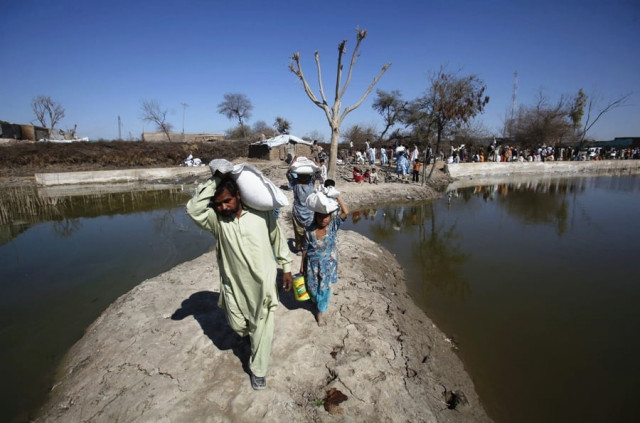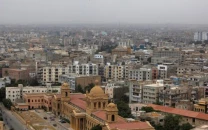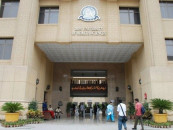Lanterns and Sindhi bund manuals become the focus of flood prep
Committee of experts to train lower irrigation staff.

The Sindh irrigation department and the Sindh Irrigation and Drainage Authority (SIDA) are now focusing on training their staff to combat floods and maintain river embankments. The departments are also training field officers in using machinery and tools.
The Sindh secretary of irrigation, Khalid Haider Memon, said that the training will be completed before the monsoons, but he gave no date for the planned completion. He announced the formation of an 'experts committee' while presiding over a meeting at the SIDA secretariat on Tuesday.
The committee comprises retired chief engineer Khadim Ali Memon, retired executive engineer Gulzar Ali Shah, Associated Consultants Engineering (ACE) regional head Ibrahim Samo, SIDA's floods in-charge Aashiq Ali Lakhan, and Water Sector Improvement Programme's project director, Zahid Junejo.
Secretary Memon pointed out that the irrigation staff assigned to monitor embankments do not use bund (embankment) registers. Bund registers, aided by gauges, are used to record the water levels daily and monitor the conditions of embankments and levees or dykes.
The committee said that currently the department's personnel are inadequately trained for combating floods. "The conditions of the river levees vary during different times of the year and are not recorded," said Memon while strongly recommending the maintenance of a log of water levels in the registers.
Ibrahim Samo from the ACE added that even bund manuals are not being followed. "A majority of the staff are totally unaware of the method to operate the levees," he said. He said that the translation of the manuals into Sindhi from English would help persuade the staff to read it.
Seepage is a precursor to breaches in the levees or bunds. "The field staff should know how to detect seepage," Memon said. "Often enough it is not taken seriously." He proposed providing the staff lanterns to watch over the bunds as torches do not serve the purpose. "Light from the lanterns spreads in such a way that it helps staff detect leaks and seepage, while the torches brightens up only a specific spot in one direction."
The participants of the meeting unanimously decided to remove sluice gates from the dykes. These gates are installed at the embankments to provide a controlled inlet to floodwater in depression areas. The purpose is to soak the loop embankments which remain dry all throughout the year except the flood season. "This inlet should be sealed as the depression areas have been cultivated," said engineer Gulzar Ali Shah.
SIDA Managing Director Ehsan Laghari told the committee that the staff lacked knowledge. "There are men who have been working for the past ten years but are oblivious to the rudiments of flood fighting."
He suggested that training should be interactive and committee members should divide up their areas of responsibility. "We will have to bolster the capacity of the lower cadre staff that remains at the forefront in flood fighting."
Published in The Express Tribune, July 7th, 2011.



















COMMENTS
Comments are moderated and generally will be posted if they are on-topic and not abusive.
For more information, please see our Comments FAQ